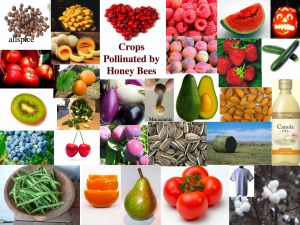“May you bee inscribed and sealed in the book of life for a good and sweet new year. May all your offspring survive to see adulthood and may you successfully pollinate our crops so that we will have sufficient to eat.”
It’s not that I’m actually suggesting this prayer is added to our Rosh HaShanah prayer books – heaven know the services last long enough already – but the words did spring to mind now that we are surrounded by pictures of fluffy cute bumblebees in the run up to the Jewish New Year. These yellow and black critters have become as much symbols of the coming festival as are Shofars and pomegranates, due to the slightly tenuous link as shown in the following diagram:
This explanation is most appreciated by the under-fives at preschool who are busy sticking rolled up pieces of tissue paper onto gigantic bee pictures whilst forgetting they would run a mile if approached by a real-life bumble a fraction of the size. However, I am one who never misses an opportunity to make something which appears simple into something far more complicated. I would suggest the following diagram represents the real connection between bees and Rosh Hashanah:
Bees pollinate our crops, resulting in bountiful harvests and plenty of food so that everyone eats well, feeds their families and are healthy and happy.
But unfortunately even this is at risk thanks to a phenomenon known as Colony Collapse Disorder, which has seen approximately 30% of bee populations in Europe and the USA disappear each year since 2006. Various theories have been put forward as to the cause, including use of chemicals and pesticides, contaminated water supplies, climate change, loss of habitat, disease, and sensitivity to electromagnetic radiation. As is often the case, the real story is likely to be a combination of the above factors plus a few more not yet thought of. Either way, human intervention is at least partly to blame. Bees are not the only pollinators but are certainly one of the key ones, along with butterflies who are also suffering in different ways.
Thus the bee can be a Rosh Hashanah motif for all ages, and not just those in kindergarten. If you have difficulty connecting with the messages of Rosh Hashanah, then think about the plight of bees and how they reflect the fragility of our own lives. Being inscribed into the Book of Life depends partly on external factors which we don’t understand or can’t control, but also on sensible risk management and awareness of the impact of our own actions.
L’Shana Tova U’Metuka
This blog post was originally published on The CommonTree on 29th September 2016.

Author
-
I am fascinated and terrified by everything related to Climate Change. I am not a climate or environmental scientist but take every opportunity to study the field. The more I learn, the more I feel compelled to join the millions of people worldwide taking action to limit the severity of Climate Change. As a Jewish, British, social scientist living in Australia with an inspiring husband and three school-aged kids, I believe I have a unique perspective to add to the conversation. Please join me as I climb, run and stumble my way through the biggest challenge that has ever faced humankind.



